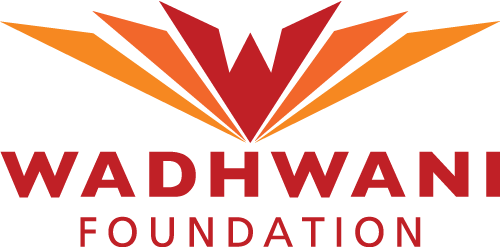Jobs are changing faster than skills can keep up. Learning agility — the ability to adapt, unlearn, and grow — is now the single most important soft skill for the future workforce.
While technical skills farm short-term wins, learning agility helps you naturally thrive across careers that haven’t even been invented yet.
According to the World Economic Forum, adaptability, resilience, and problem-solving are top skills companies now seek. This shift is clear: being a quick learner matters more than memorizing a list of technical abilities.
What Exactly is Learning Agility?
Learning agility is how fast and well you can:
| Action | What It Means |
| Learn | Pick up new ideas quickly |
| Unlearn | Let go of old habits that no longer fit |
| Relearn | Update skills to match new needs |
At the Wadhwani Foundation, we meet thousands of ambitious students, early-stage employees, and entrepreneurs every year. They chase certifications. They upskill. They cross off courses from checklists.
But the truth?
It’s not the people with the longest list of hard skills who stay ahead.
It’s the people who can learn, unlearn, and relearn — again and again.
It’s not about knowing everything. It’s about being willing to know something new — again and again.
That’s learning agility — the soft skill defining tomorrow’s workforce.
Someone with strong learning agility:
- Tries new things without fear
- Shifts plans when needed
- Learns from mistakes
- Moves forward even without perfect information
Learning agility is now the bridge between technical skilling and long-term career growth.
Why Learning Agility Beats Technical Skills Alone
Technical skills can help you land a job. But learning agility keeps you moving forward when industries shift.
Think about these examples:
| Role | Change Faced | How Learning Agility Helped |
| Software Engineer | New programming frameworks | Quickly learned and applied them |
| Sales Manager | Virtual selling became the norm | Adapted skills for online platforms |
| Healthcare Worker | Rapid telemedicine boom | Adjusted to new tools and workflows |
Hard skills farm the first opportunity. Agility grows the whole career.
When you only focus on hard skills, you risk becoming outdated. When you build learning agility, you can pivot and progress as new opportunities come.
How to Build Learning Agility Starting Today: Actionable Ways
Building learning agility is simple but needs practice. Here’s how to begin:
1. Start saying “Yes” to New Projects
Stretch yourself. Try roles and tasks outside your comfort zone. Take on projects that scare you a little. Growth happens when you challenge yourself.
Example: Lead a cross-functional project even if it’s new territory.
2. Reflect After Every Experience
Ask: What worked? What didn’t? What can I do differently?
Learning isn’t automatic. Reflection helps you turn experiences into real skill.
3. Build Curiosity as a Daily Habit
Read articles outside your main field. Join webinars. Talk to people from other industries.
Curiosity feeds adaptability.
4. Build a 30-Day Learning Habit
Learn one small thing outside your core field every day for 30 days.
Example: If you’re in finance, spend 10 minutes daily understanding basic coding.
5. Welcome Feedback Without Defensiveness
Feedback is a shortcut to better performance. See it as a tool, not a judgment.
6. Think “Skills, Not Roles”
Don’t box yourself into a job title. Focus on building skills like problem-solving, teamwork, and resilience — they stay valuable no matter where you go.
7. Celebrate Failures as Data Points
Treat setbacks like early warning systems, not career endings.
Example: Create a “failure resume” tracking lessons learned from mistakes.
8. Question What You “Know”
Challenge old beliefs. Ask, “What if this is wrong?”
Example: If you always use one problem-solving framework, try another — even if it feels strange.
As the LinkedIn Workplace Learning Report shows, companies are now prioritizing soft skills development through upskilling programs.
Our own Wadhwani Foundation skilling initiatives are designed to help learners build future-ready skills, starting with learning agility.
Learning Agility is Your Career Insurance
Future careers will reward those who can learn fast, think sharp, and shift when needed. Learning agility isn’t just a soft skill — it’s survival.
Start growing it now, and you’ll stay valuable no matter how the future shapes up.
Key Takeaways
- Learning agility is the #1 future skill — beyond technical expertise.
- Hard skills get you started. Agility keeps you relevant.
- Building curiosity, seeking feedback, and staying flexible are the fastest ways to build it.
- Organizations like Wadhwani Foundation support this through practical skilling programs.
At our Skilling program for jobseekers and early-stage employees, we encourage rapid iteration, not just final outcomes.
Real Queries Answered
Q1: Why is learning agility more important than experience?
Because experience without agility can lock you into outdated ways of thinking.
Q2: Can learning agility be taught?
Absolutely. It’s a practice, like building muscle — not a talent you’re born with.
Q3: What are the signs of high learning agility?
Curiosity, flexibility, quick problem-solving, emotional resilience, and taking action without having 100% information.
Learning Agility is the New Employability Currency
Degrees open doors. Certifications add value.
But learning agility ensures you keep earning your place — again and again.
It’s no longer the strongest who survive. It’s the most adaptable.
Start small. Stay curious. Keep moving.
Your future career depends on it.



